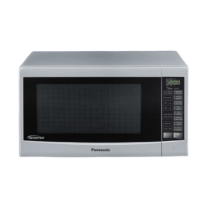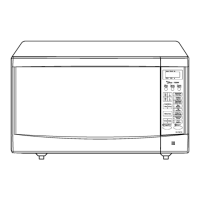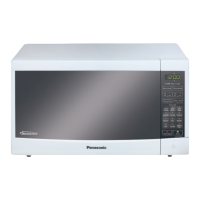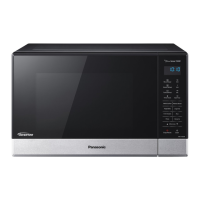Cooking Techniques (continued)
Turning and Rearranging
It is not possible to stir some foods to redistribute the
heat. At times, microwave energy will concentrate
in one area of a food. To help ensure even cooking,
some foods need to be turned or rearranged. Turn
over large foods such as roasts or turkeys. Generally,
they are turned over once halfway through heating.
Rearrange small items such as chicken pieces,
shrimp or hamburger patties. Rearrange pieces from
the edge to the centre and pieces from the center to
the edge of the dish.
Standing Time
Most foods will continue to cook by conduction after
the microwave oven is turned off. In meat cookery,
the internal temperature will rise 5 °C if allowed to
stand, covered, for 10-20 minutes.
Casseroles and vegetables need a shorter amount of
standing time, but this standing time is necessary to
allow foods to complete cooking in the center without
overcooking on the edges.
Testing for Results
The same test for doneness used in conventional
cooking may be used for microwave cooking.
Cakes are done when a wooden stick comes out
clean and cake pulls away from side of the pan.
Chicken is done when juices are clear yellow and
drumstick moves freely.
Meat is done when fork tender or splits at fibres.
Fish is done when it flakes and is opaque.
Converting Favorite Recipes
Select recipes that convert easily to microwave
cooking such as casseroles, stews, baked chicken,
fish and vegetable dishes. The results from foods
such as cooked soufflles or two-crust pies would be
less than satisfactory. Never attempt to deep fat fry in
your microwave oven. A basic rule, when converting
conventional recipes to microwave recipes, is to cut
the suggested cooking time to a quarter. Also, find
a similar microwave recipe and adapt that time and
power setting. Season meats with herbs and spices
(and half the salt) before cooking; the rest of the salt
after cocking.
Stews are not browned before cooking. Omit any oil
or fat that would be used for browning. Cut stew meat
into 2.5 cm pieces. Cut carrots, potatoes and other
firm vegetables into small pieces. Carrots should be
thinly sliced and potatoes cut into dice.
Cover with glass lid and cook at 1000 W to bring
liquid to a boil and cook at 100 W until tender. Stir
occasionally. Note: A small plate placed on top of
the meat and vegetables will help stop the meat
overcooking.
Casseroles microwave cook well. Cut foods into
uniform pieces. Condensed soup makes a good base
for casseroles.
Select a dish that is large enough to allow for stirring.
Cooking covered with a glass lid or cling film reduces
cooking time. Stir occasionally during cooking. To
keep crumb topping crisp sprinkle on before stand
time.
Heating Frozen Foods
Most frozen convenience foods have microwave
heating directions on the back of the package. Refer
to these directions for recommended power levels,
heating times and general instructions.
General Directions for Heating Frozen
Convenience Foods
Pierce pouch vegetables or entrees with a fork or
knife. Place pouch in a dish before heating.
Frozen foods in metal containers deeper than
2 cm such as lasagna or baked stuffed potatoes,
must be removed from the foil container and placed
in an appropriately sized microwave-safe container.
Heat covered with a lid or plastic wrap.
NOTE: If food is difficult to be removed from
container, rinse the bottom of the container with hot
water.
To heat frozen dinner in foil containers, remove
dinner from box, if there is a foil cover, remove it.
Some foods, such as bread, French fries or batter
type desserts such as brownies, do not microwave
well. Remove these types of food from tray. Cover
tray except desserts with plastic wrap. Heat
according to manufacturers’ directions. Place foil tray
in the center of the oven. Foil tray should not touch
oven walls or other metals. Leave at least 2-3 cm
space between foil tray and oven walls. Heat only 1
foil tray in the oven at a time.

